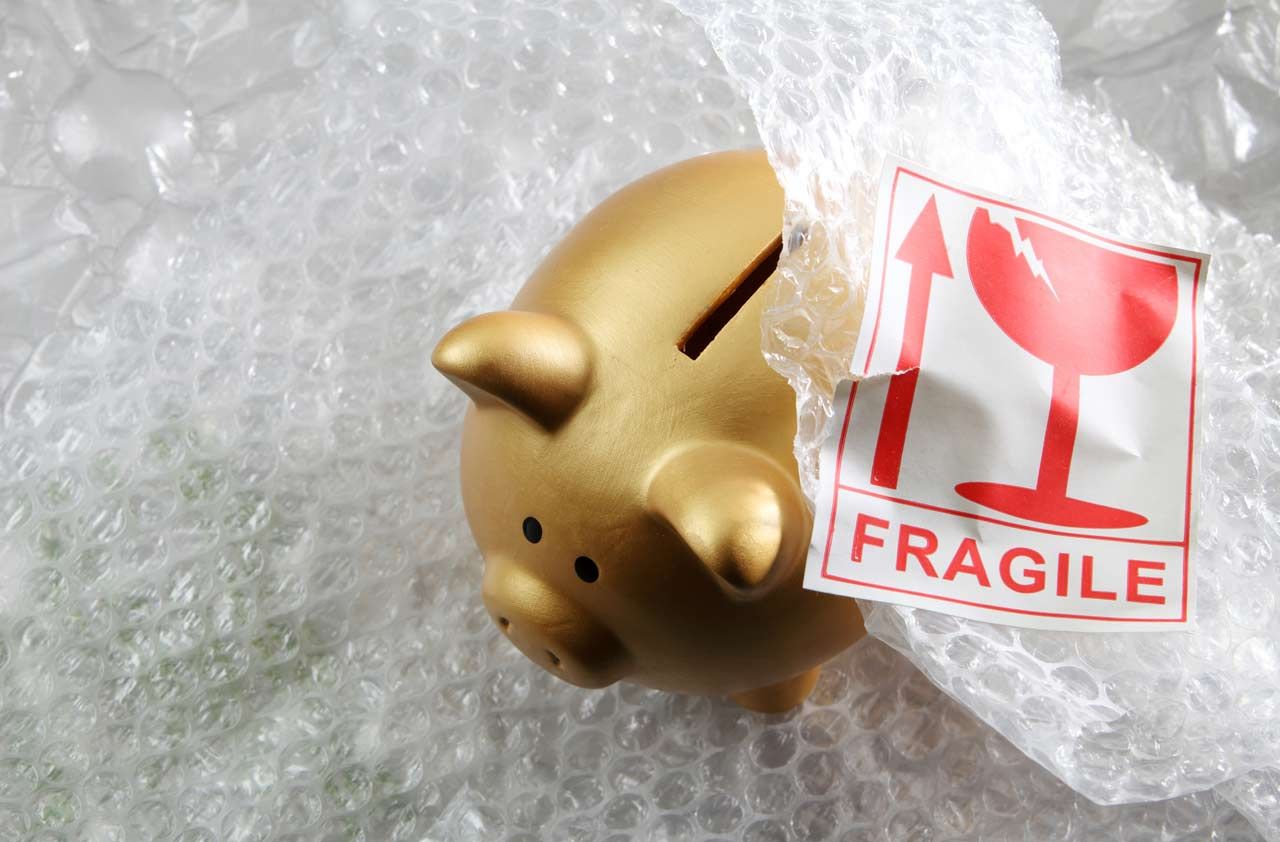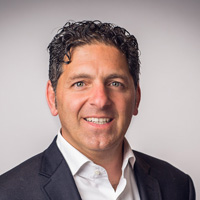Federal Workers: Are You Playing It Too Safe with Your TSP?
The guarantee that comes with the G Fund may sound great, but it comes with a hidden retirement risk that many savers tend to overlook.


A lot of people like to play it safe.
That’s one explanation for why the conservative G Fund remains the most popular fund among federal employees invested in the government’s Thrift Savings Plan (TSP).
Because the fund is invested in short-term U.S. Treasury securities, specially issued to the TSP, principal and interest payments are guaranteed by the U.S. government — which makes it feel like an especially comfortable, secure investment. And until 2015, it was the default for employees who hadn’t chosen an asset allocation when they signed up for the TSP.

Sign up for Kiplinger’s Free E-Newsletters
Profit and prosper with the best of expert advice on investing, taxes, retirement, personal finance and more - straight to your e-mail.
Profit and prosper with the best of expert advice - straight to your e-mail.
You can almost hear a sigh of relief coming from risk-averse federal employees around the country when they read the word “guaranteed.” And who can blame them? Market volatility can be a scary thing, and the G Fund takes some of that worry away. The promise of a steady return can be a pitfall, though, missing the market’s growth opportunity, especially in employees’ younger years.
By playing it safe, these federal employees are taking a different kind of risk — that their savings may not keep up with inflation, and lost market growth, potentially resulting in insufficient funds for retirement income.
To illustrate, the 10-year average returns from 2009 to 2018 for the G Fund were 2.3%, while the plan’s more aggressive S&P 500 C Fund averaged 13.17% over the past 10 years. Given the financial crisis and the moves back upward that the market made in 2009 and 2010, examining a more realistic five-year return from 2014 to 2018 still shows the G Fund relatively unchanged, while the C Fund averaged 8.53%.
The urge to use only the G Fund is the most common misunderstanding I see with so many federal employees I assist. Or they simply change the entire balance and contributions to the G Fund when market volatility strikes. Although there may be wisdom in securing your retirement savings from loss when nearing retirement, it also can be an opportune time to use your future contributions to purchase in a downward-moving market. In other words, buy the C Fund now as it loses and becomes cheaper. It’s like buying it on sale.
But how can you know this without a little guidance? It points to a significant problem with the TSP: Federal employees simply aren’t given enough information or advice about asset allocation, risk and reward, and how their choices will affect their retirement income.
In other words, they’re winging it.
That might have been OK back in the day, when federal workers could depend on a pension program that provided much of their income in retirement. But, because of changes to the federal system and the advent of the Federal Employees Retirement System, that pension is far more modest for those employed in or after 1987. The TSP joined Social Security as a pivotal and integral component of a federal worker’s retirement income.
This is not to say the G Fund does not have a place in a near-retiree’s portfolio. It’s simply rarely prudent to place all your balance into one fund, ignoring the potential gains in others. Retirement and life are quite similar: Balance and moderation lead to success.
This same advice can be applied to any one of the plan’s other four funds, including the C Fund: 100% exposure to one fund is rarely the answer.
Even now that the TSP offers plan participants target-date Lifecycle Funds (L Funds) — which have been the default choice since 2015 — I still see investors who want to turn to the G Fund when things get a little shaky in the markets. When there was a pullback in October and December 2018, for example, at least a half-dozen federal workers I know told me they had moved their entire balance to the G Fund. When I asked why, they gave me three answers:
- I was afraid of more market losses.
- My co-worker told me to do it.
- I follow a website that instructed me to make the change to the G Fund.
The most concerning one is the one I tend to hear most commonly: My co-worker told me to do it. Your co-worker, while well meaning, is only aware of his or her own circumstances, and not yours. Your timeline for retirement, income needs, pension estimates, age and Social Security payments, goals and dreams, possible relocation plans, and even mortgage and debt obligations all are quite personal and may drastically affect your TSP fund choices. Their advice is limited at best, and certainly lacking the full scope of understanding and knowledge to be able to give the best advice. These same concerns and pitfalls exist with websites that give arbitrary TSP investment advice.
To me, that demonstrates a serious need for goal-setting and proper income planning.
A few years ago, in the TSP’s Highlights newsletter July 2014 (https://www.tsp.gov/forms/newsletterarchive.html), an article titled “Retirement Income Should Be the Outcome” advised investors to look at their account balance as a retirement paycheck instead of simply as a dollar amount. The column touched on longevity risk and pointed workers to the retirement-income calculator on the TSP website — and it offered a few tips, including “Don’t invest your money too conservatively in your early saving years,” and “Don’t just wing it; consult a financial planner if necessary.”
It would be nice if federal employees were getting similar advice in person — particularly new hires and near-retirees. (Most private industry workers are getting at least that much help.)
I’m not trashing the TSP — quite the opposite. The low annual expense ratios in the plan can keep more money in play for employees through their earning years. And the Roth TSP, which was initiated in 2012, can be an excellent head start for tax planning.
These are solid building blocks for retirement. But it’s critical to have a blueprint to make the most of all your benefits — your pension, Social Security, TSP, etc. — and maximize the opportunities each presents. A key to any successful retirement is having a plan, if not a written retirement income plan.
If you’re a federal employee and your agency or workplace isn’t providing what you need, consider seeking guidance from a professional — preferably a financial professional who is knowledgeable and experienced in helping federal employees. My feelings on planning for retirement are that I want to work with a professional who is held to the fiduciary standard and will act in my best interest. I want that confidence in my retirement. After all, it’s my life savings.
Kim Franke-Folstad contributed to this article.
CD Financial is a Registered Investment Adviser. CA LIC #0G46793. Investing involves risk, including the potential loss of principal. Any references to security or guaranteed income generally refer to fixed insurance products, never securities or investment products. Insurance and annuity product guarantees are backed by the financial strength and claims-paying ability of the issuing insurance company. CD Financial is not affiliated with the U.S. government or any governmental agency.
Get Kiplinger Today newsletter — free
Profit and prosper with the best of Kiplinger's advice on investing, taxes, retirement, personal finance and much more. Delivered daily. Enter your email in the box and click Sign Me Up.

Charles Dzama is the founder of CD Financial and assists agencies and clients with a well-thought-out financial strategy. Email Charles to request retirement training or schedule a complimentary phone call. He has passed the Series 65 securities exam and holds life insurance licenses in California, Colorado, Nevada, Washington, Florida, Pennsylvania and Missouri. Charles is registered as an Investment Adviser Representative.
-
 Don’t Make These Five Mistakes on Your Tax Return
Don’t Make These Five Mistakes on Your Tax ReturnTax Filing The IRS warns taxpayers to watch out for these common errors as they prepare to file.
By Gabriella Cruz-Martínez Published
-
 Cooling February CPI Lifts Rate Cut Hopes: What the Experts Are Saying
Cooling February CPI Lifts Rate Cut Hopes: What the Experts Are SayingWhile the Fed is likely to keep interest rates unchanged next week, an encouraging February CPI report raises the odds for more easing later this year.
By Karee Venema Published
-
 This Underused IRA Option Offers Tax Benefits and Income Security
This Underused IRA Option Offers Tax Benefits and Income SecurityLooking to avoid running out of money in retirement? Consider longevity protection provided by a QLAC as a component of your retirement income plan.
By Jerry Golden, Investment Adviser Representative Published
-
 These Four Books Explore How to Leverage Our Outrage Positively
These Four Books Explore How to Leverage Our Outrage PositivelyThe authors offer some powerful tools to help us find solutions to discord rather than remaining silent or blowing up in anger.
By H. Dennis Beaver, Esq. Published
-
 Financial Pitfalls to Avoid in Your 30s, 40s and 50s
Financial Pitfalls to Avoid in Your 30s, 40s and 50sAs you pass through each decade of working life and build wealth for retirement, watch out for the financial traps that can hinder your progress.
By Julia Pham, CFP®, AIF®, CDFA® Published
-
 Five Key Retirement Challenges (and How to Face Them Head On)
Five Key Retirement Challenges (and How to Face Them Head On)Life will inevitably throw challenges at you as you get older. But making a flexible retirement plan — and monitoring it regularly — can help you overcome them.
By Walt West Published
-
 Four Action Items for Federal Employees With $2M+ Saved
Four Action Items for Federal Employees With $2M+ SavedIf you can't stand the chaos, maybe you can walk off into the sunset of retirement. Here are some thoughts on how to figure out if that would work for you.
By Evan T. Beach, CFP®, AWMA® Published
-
 How to Help Accelerate Support for Women's Equality
How to Help Accelerate Support for Women's EqualityInternational Women's Day was earlier this month, and the theme this year is Accelerate Action. Here's how we can all pitch in to help drive gender parity.
By Marguerita M. Cheng, CFP® & RICP® Published
-
 How Tariffs Could Impact Affluent Retirees
How Tariffs Could Impact Affluent RetireesThe wealthier you are, the less price increases on groceries and cars will hurt you, but if markets dive or we enter a recession, that's a different story.
By Evan T. Beach, CFP®, AWMA® Published
-
 How to Help Shield Your Retirement From Inflation
How to Help Shield Your Retirement From InflationPicking the right investments at the right time can help ensure inflation won't flatten your retirement savings. Here are some tips.
By Steven C. Siegel, ASA, MAAA Published